
Level Designer
- Platforms: PC
- Engine: Unity
- Team Size: 4
Identifying the Opportunity in Gameplay Mechanics
What can the player do?
- Walk around
- Orbit camera
- Take photos
What can the environment do?
- Act as objective pieces that the player must photograph
- Serve as a space to be explored
Creating the Space for those Mechanics
Basic Principle Behind the Level
The core mechanic of the game is exploration, a photo hunt adventure. To have the level design service the gameplay, every landmark or “weenie” had to serve two functions: be identifiable to the player in the photo while being functional as a space to travel in. Without the first function, the core mechanic can be difficult to find or frustrating as a game loop, but without the second function the locations are merely objects hidden in the arena.
We wanted it so the player could be inside the location, but must adjust their view to fully “spot” it. This added another layer to the hide and seek nature of the game.
We found that a hub and spoke map didn’t allow for much engaging exploration. The player knew that the hub of the atrium was not a location to be photographed, it was a matter of just exploring each spoke until finding a match. Thus, a circuit style was implemented to re-contextualize each “spoke” into a passing space.
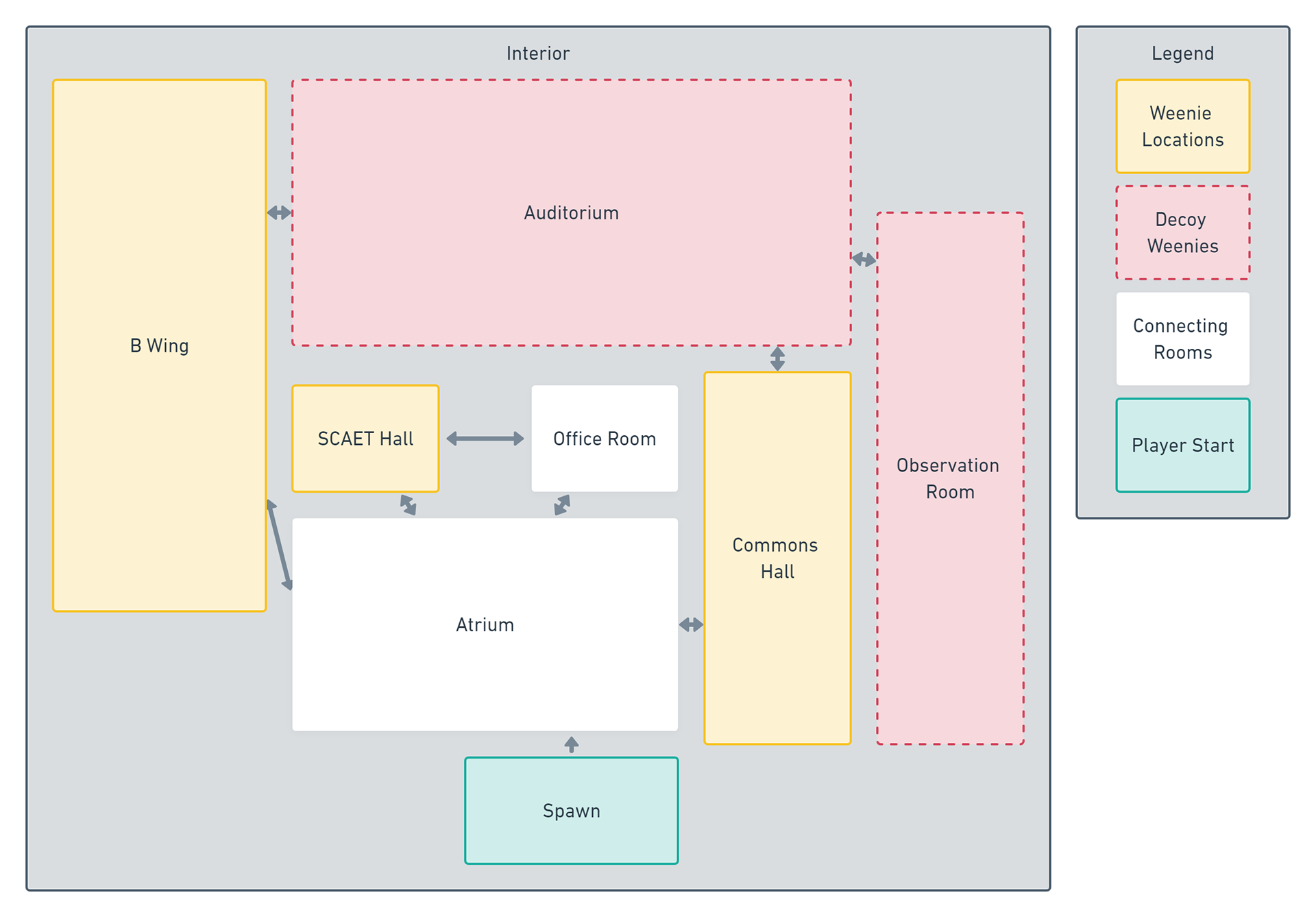
Inspiration and Justification
Using real life locations that were on the way to access our studio space proved an easy solution to get a functional travel space as well as an identifiable area (note the splashes of yellow in each of the real world locations).
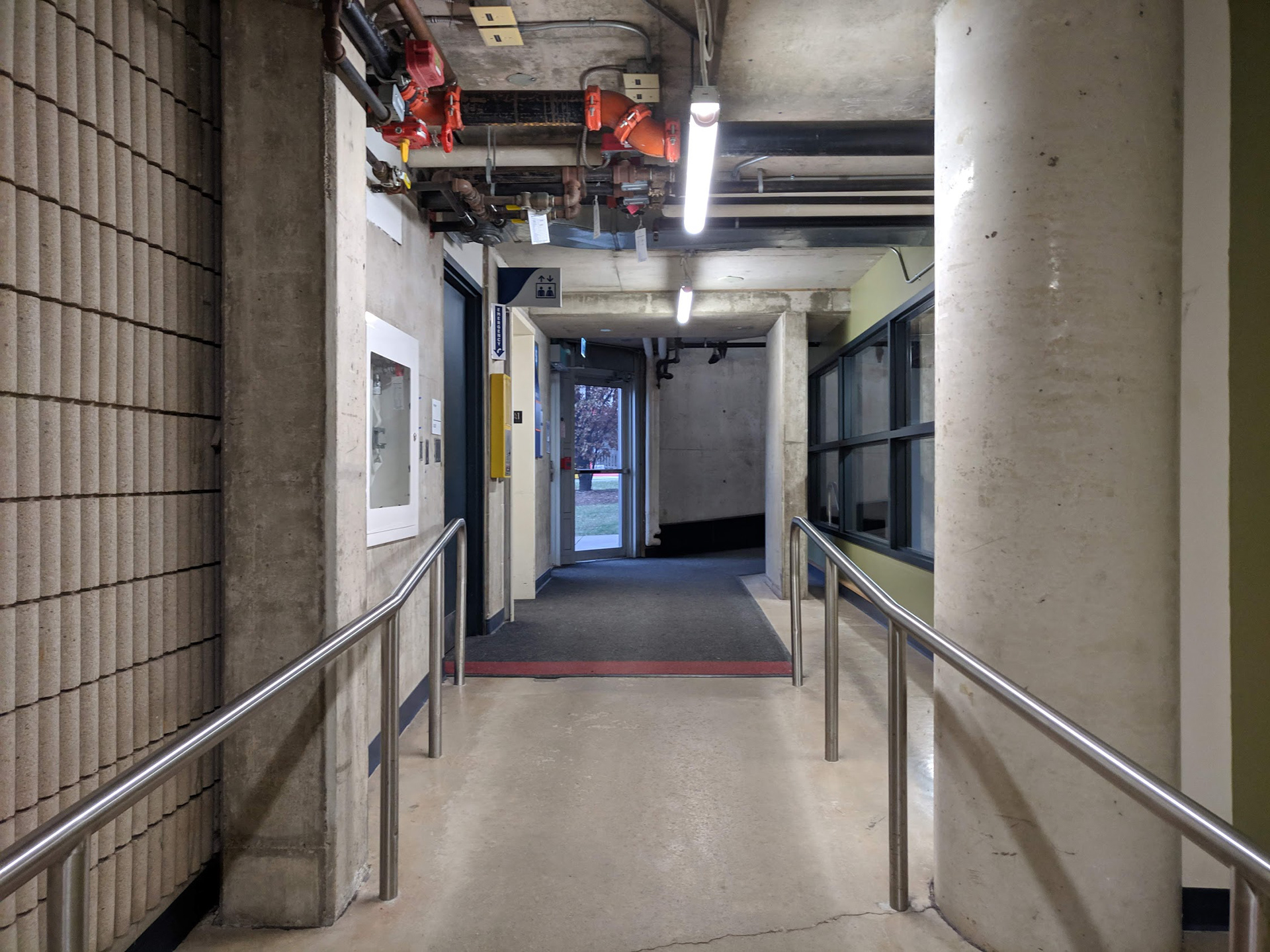
Real life location A 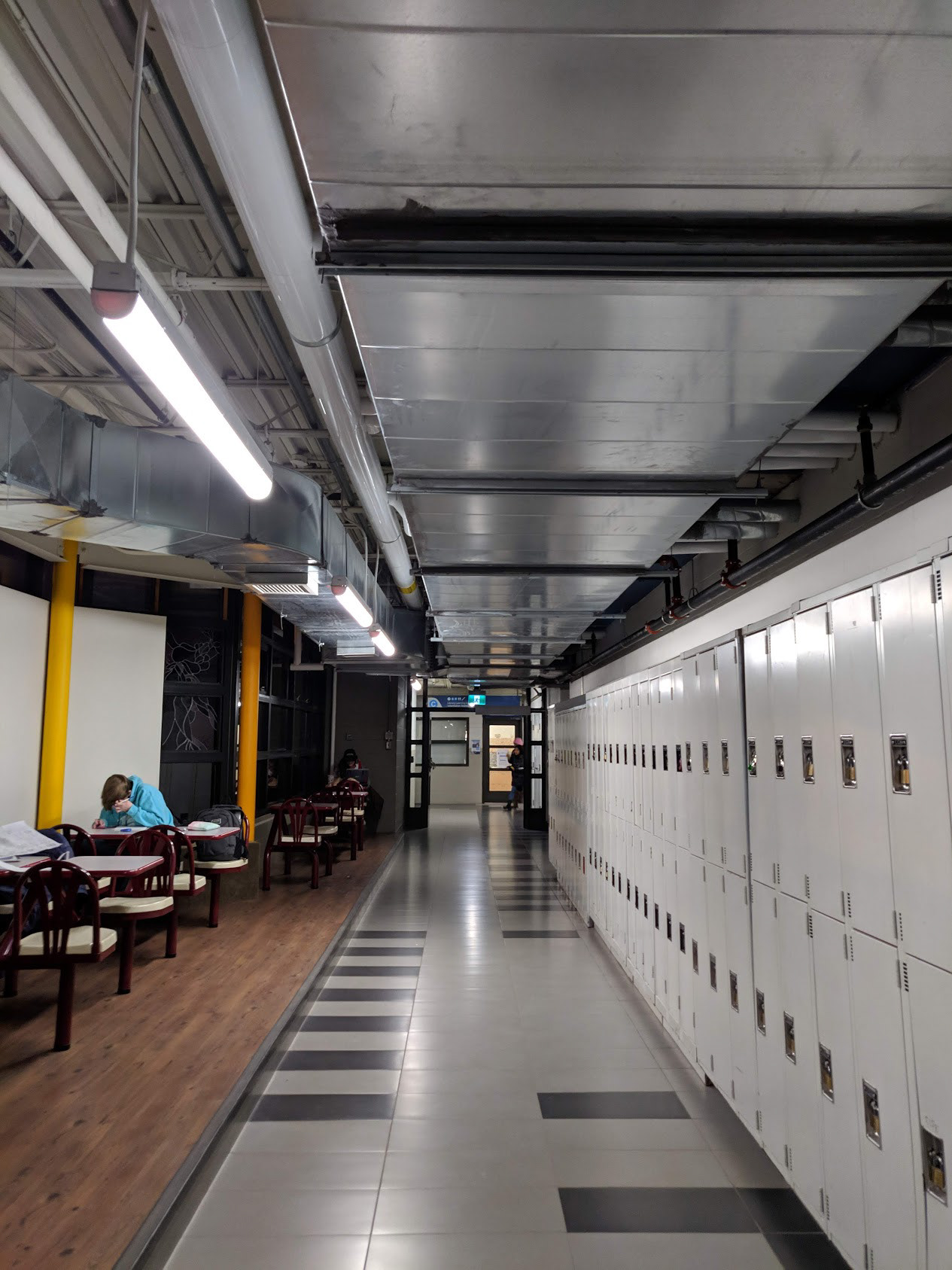
Real life location B 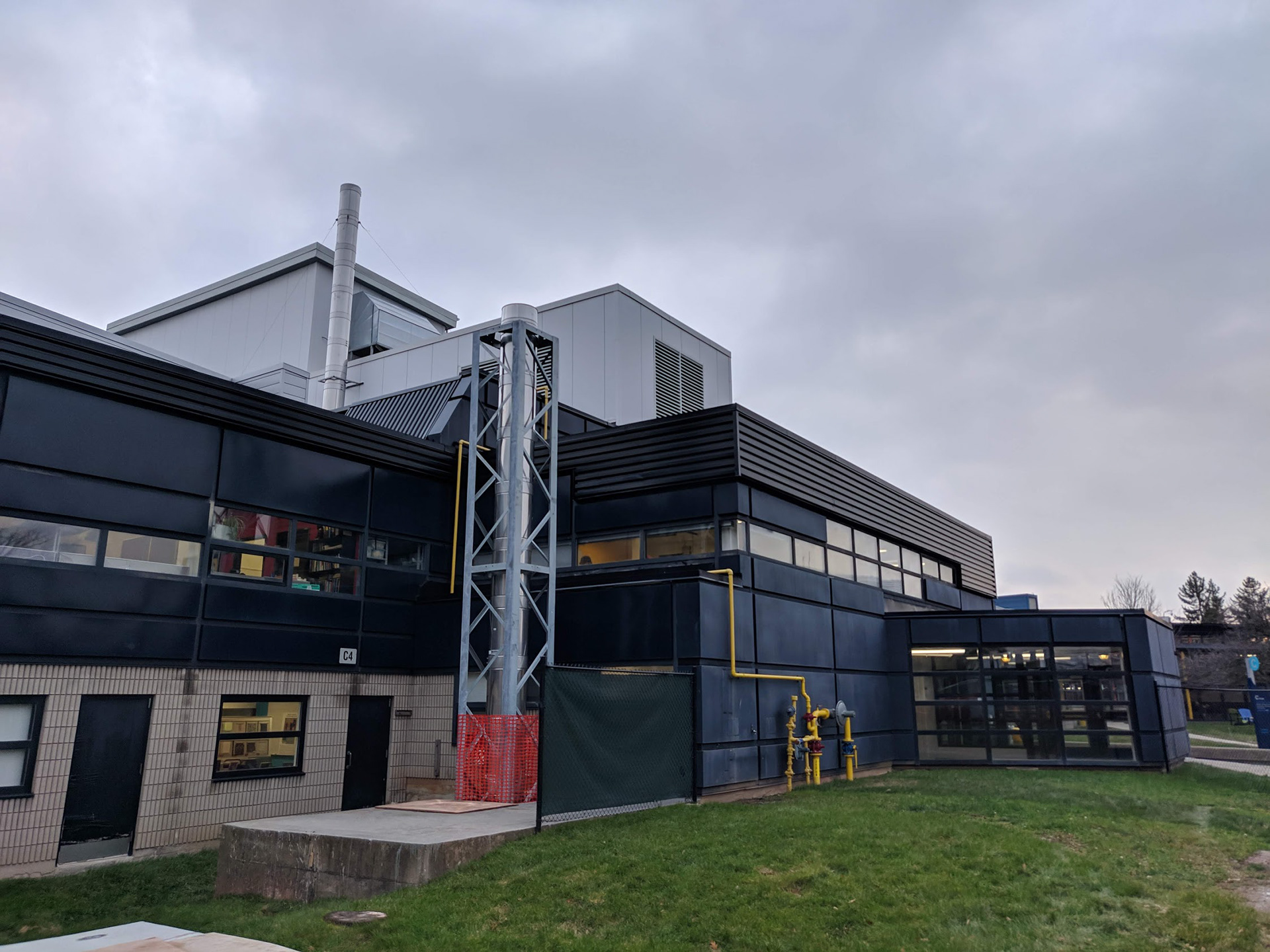
Real life location C 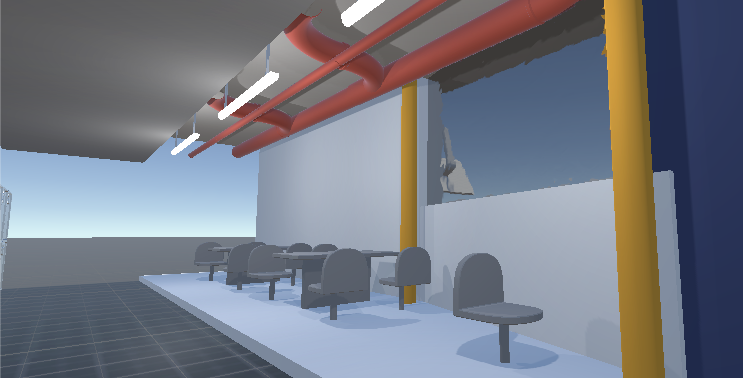
Creating commons hall 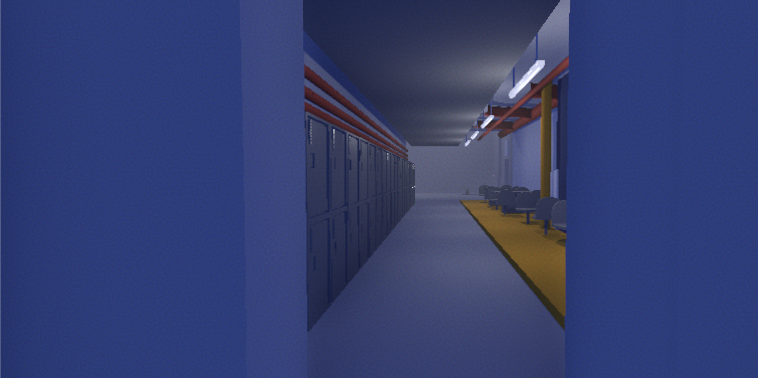
Adding commons hall to other areas of the map 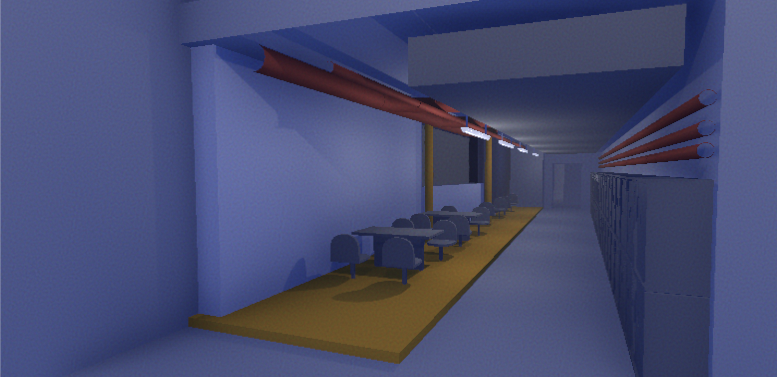
The proper angle of the hall 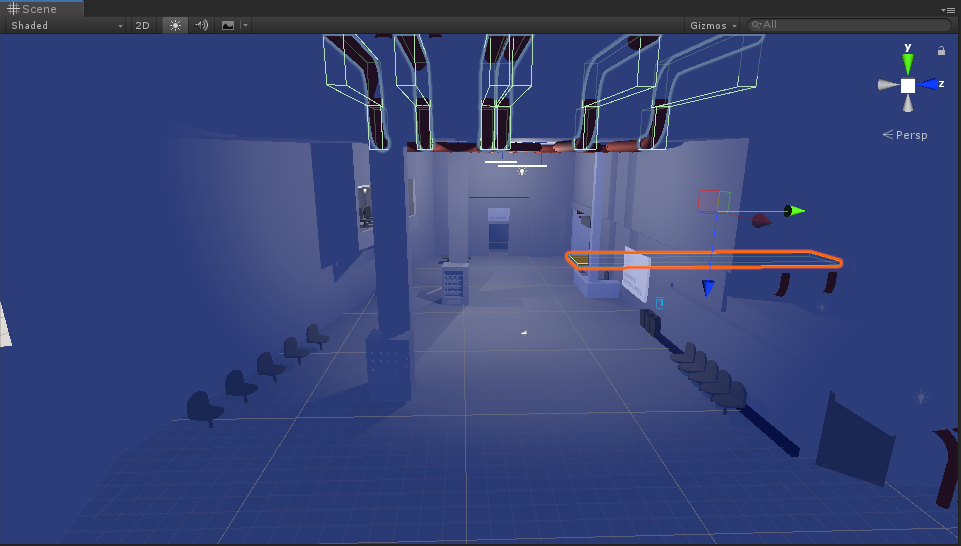
The fake weenie auditorium 
This atrium is the first area unlocked 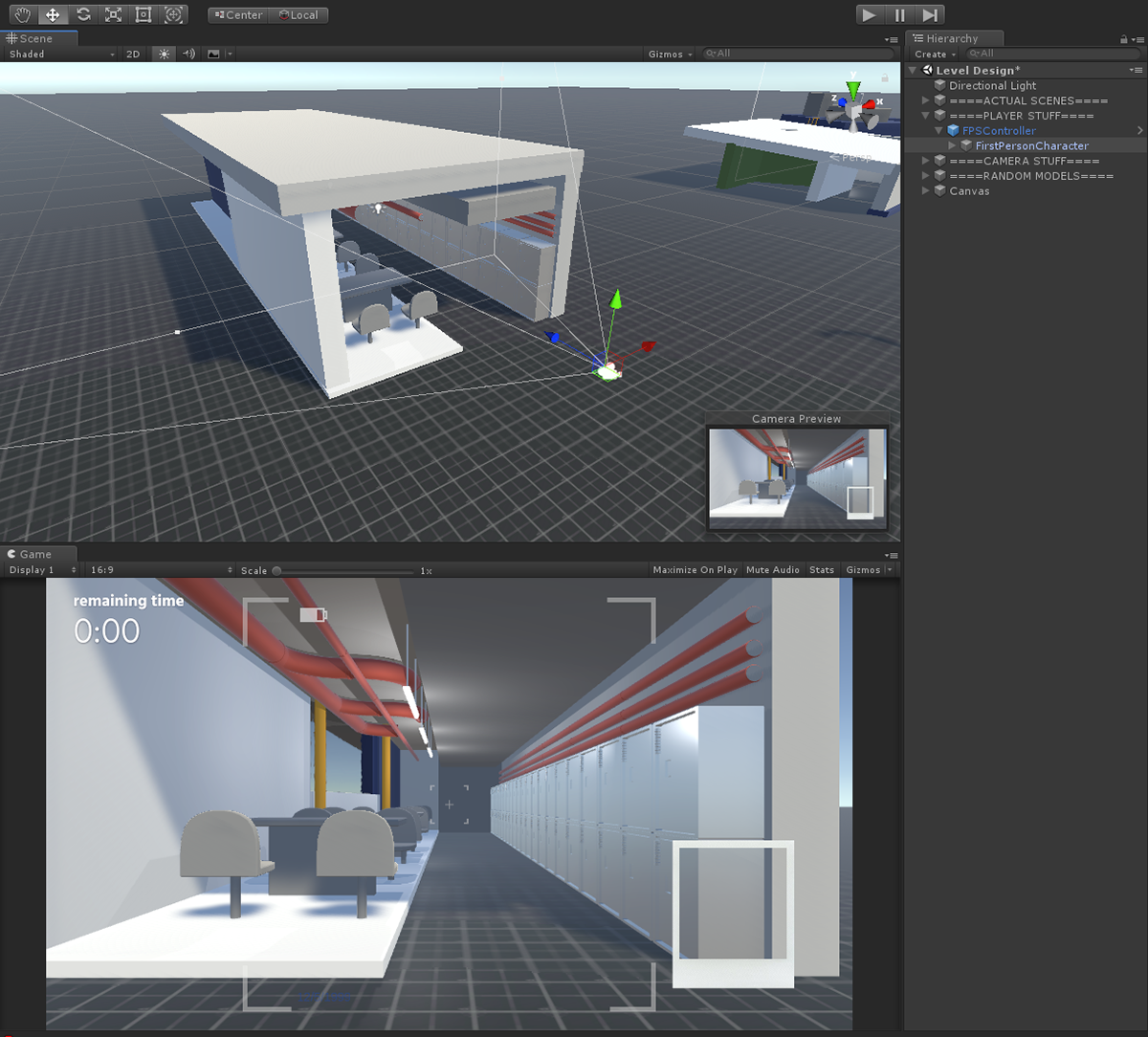
Modularity in weenies meant they could be moved around easily
Iterations in Development
Blockout Updates
We iterated on the placement of these weenies and how best to space them out throughout the map. We found that their location did not add much challenge to finding them, so we decided to add challenge in a different way.
By using the connecting spaces and mimicking color motifs, we scattered red herrings around the map. This made it so players would make a mental note of these locations and have a conscious effort in the exploration, as these locations might come up later.
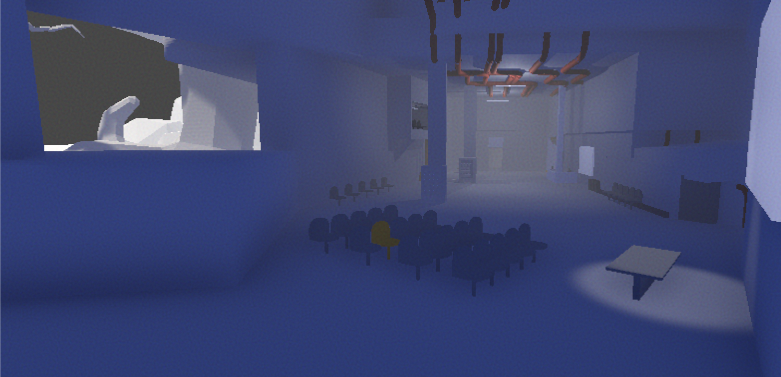
Fake yellow chair weenie 
Real weenie next to yellow chair area 
The player can pass the third weenie to get to the area in the previous photo
Takeaways on the Last Iteration
Every space designed in a level cannot serve only one function. Does the connecting space between weenies help create a haystack to hide the needle? Or is it simply there to be a walking simulator? Does the weenie simply serve as a gameplay objective? Or is it also connecting space that can be reused and re-contextualized further along in the gameplay?
To support interesting and dynamic gameplay, you need a space that can create multiple opportunities for that gameplay to shine. If the space only rewards one type of action, a lot of player agency is lost and the mechanics are no longer tools to use creatively but behaviour to use in monotony.